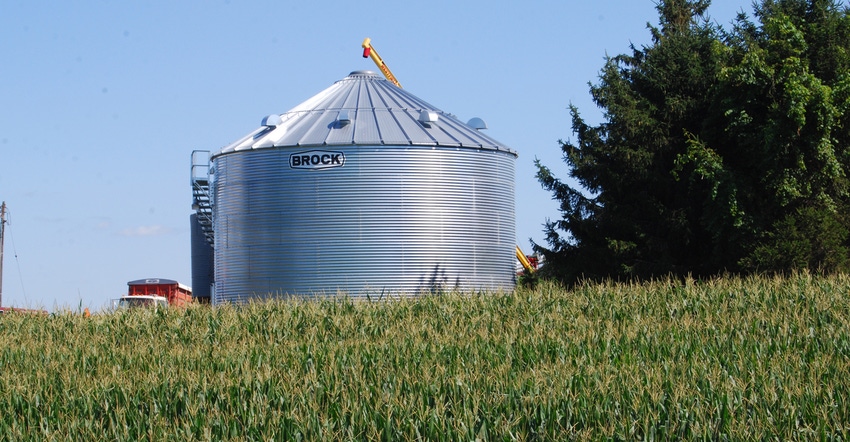June 20, 2018

Imagine four straight years when both corn and soybean futures prices peaked somewhere between early April and mid-July. Farmers could preharvest-market a portion of their new-crop corn and soybeans during the growing season at prices that proved to be much higher than those received at harvest.
Those farmers could have delivered priced bushels at or shortly after harvest and avoided additional storage and interest charges and generated necessary cash flow. Most Iowa farmers will price at least a portion of their 2018 crops prior to harvest.
Why seasonal price rallies occur
Most years, corn futures prices tend to rally in the early spring and peak by late June or early July. This reflects the period of greatest uncertainty of production for a crop produced primarily in the Northern Hemisphere. Soybean futures prices tend to move higher in both the late fall and winter when Southern Hemisphere production is threatened.
Then soybean prices typically rally again in spring through early summer, reflecting uncertainty of production in the Northern Hemisphere. However, by mid-July, the highest seasonal prices for both crops have occurred and futures prices tend to sell off as risk premium is removed with the confirmation of large Northern Hemisphere crops.
So why don’t farmers take advantage of these seasonal trends? The likely cause is a combination of procrastination, fear of being wrong, and the lack of a crop marketing plan with discipline to implement that plan. Most farmers tend to be eternal optimists by nature, so the same optimism for producing a crop carries over in marketing that crop during the growing season. Farmers often think the damage to crops is widespread and that futures prices should rally into late July and August. By then, crop size is evident and usually futures prices have already peaked, as much of the futures price risk premium is extracted.
So, what’s in your 2018 crop marketing plan? Many Iowa farmers already preharvest-marketed part of their new crop corn over $4 per bushel on the December futures contract. In addition, a large portion of their new-crop soybeans were priced over $10.30 per bushel on the November contract. They still need to subtract the likely basis (local cash minus futures price), but most all these sales were at profitable levels. These preharvest-marketed bushels will be delivered at or following harvest, and avoid additional storage and interest charges and generate needed cash flow.
5 items in your marketing plan
The biggest challenge is to set objectives and plan ahead. Make sure your cash flow will work to meet your farm operation’s needs for fall and winter. A crop marketing plan should include these five items:
1) Know your cost-of-production and breakeven prices.
2) Have both futures and cash price objectives; consider your cash flow needs.
3) Use Revenue Protection crop insurance.
4) Identify crop strategies and tools to be used.
5) Know the percent of production to be priced and separate the bushels for delivery from those that simply have the futures prices protected.
Farmers should try to avoid making the same marketing mistakes of the past. Start with good farm records to know your own cost of production for new-crop bushels and establish a reasonable breakeven price.
Cost of production for growing crops will vary greatly by farm and be highly dependent on final crop yields. Use of revenue protection crop insurance mitigates a large portion of both the yield and price uncertainty for marketing new-crop bushels. Consider using your actual production history (APH) as your best yield estimate prior to pollination and grain fill.
Consider having both time and price objectives in place going into the spring months. Your price objectives should reflect the futures price when above the projected prices used for Revenue Protection crop insurance. In 2018, these prices were $3.96 per bushel for corn and $10.16 per bushel for soybeans.
Cost of production for growing crops will vary greatly by farm and be highly dependent on final crop yields. The use of revenue protection crop insurance mitigates a large portion of both the yield and price uncertainty for marketing new-crop bushels. Consider using your APH as your best yield estimate prior to pollination and grain fill.
Use variety of marketing tools
Farmers should use a variety of marketing tools to spread their risk and attempt to time sales in spring to capture futures when prices are high, or basis narrows. These events tend not to occur at the same time. So, using only spot-cash and forward-cash contracts can have serious limitations. Consider using hedge-to-arrive (HTA) contracts. Perhaps moving beyond November soybeans and December corn futures contracts and rewarding on-farm storage.
Consider the use of January soybean or March corn futures contracts with the likelihood of better basis opportunities. The combination of low futures prices and wide basis, especially at harvest, has created the need for more aggressive preharvest marketing strategies than might have been used in the past.
If delivering bushels at or following harvest, include HTA or forward-cash contracts, depending on your farm storage capacity and the basis expected. Decide on a reasonable percent of new-crop bushels you plan to deliver. If you prefer to manage the futures price risk and not commit bushels to delivery, consider the use of futures hedges or the purchase of put options.
Need for written plan
Farmers who have a written marketing plan develop a purpose and accountability to market grain ahead and align their cash flow needs. Storage and interest charges aren’t free, and many farms are challenged by their ability to find profitable margins. In addition, holding multiple years of corn or soybean crops in storage increases ownership costs and perhaps grain quality risks. These factors can lead to erosion of valuable working capital.
Where can you learn more about developing your marketing plan? Search the Internet for Iowa Commodity Challenge. You’ll find 15 videos and a 65-page marketing tools workbook. Example marketing tools are explained. Make your plan as simple as you can, but be sure you are including time and price objectives, cash flow needs, and that you understand the cost of ownership when storing grain.
Johnson is an Iowa State University Extension farm management specialist. Visit his website.
About the Author(s)
You May Also Like






